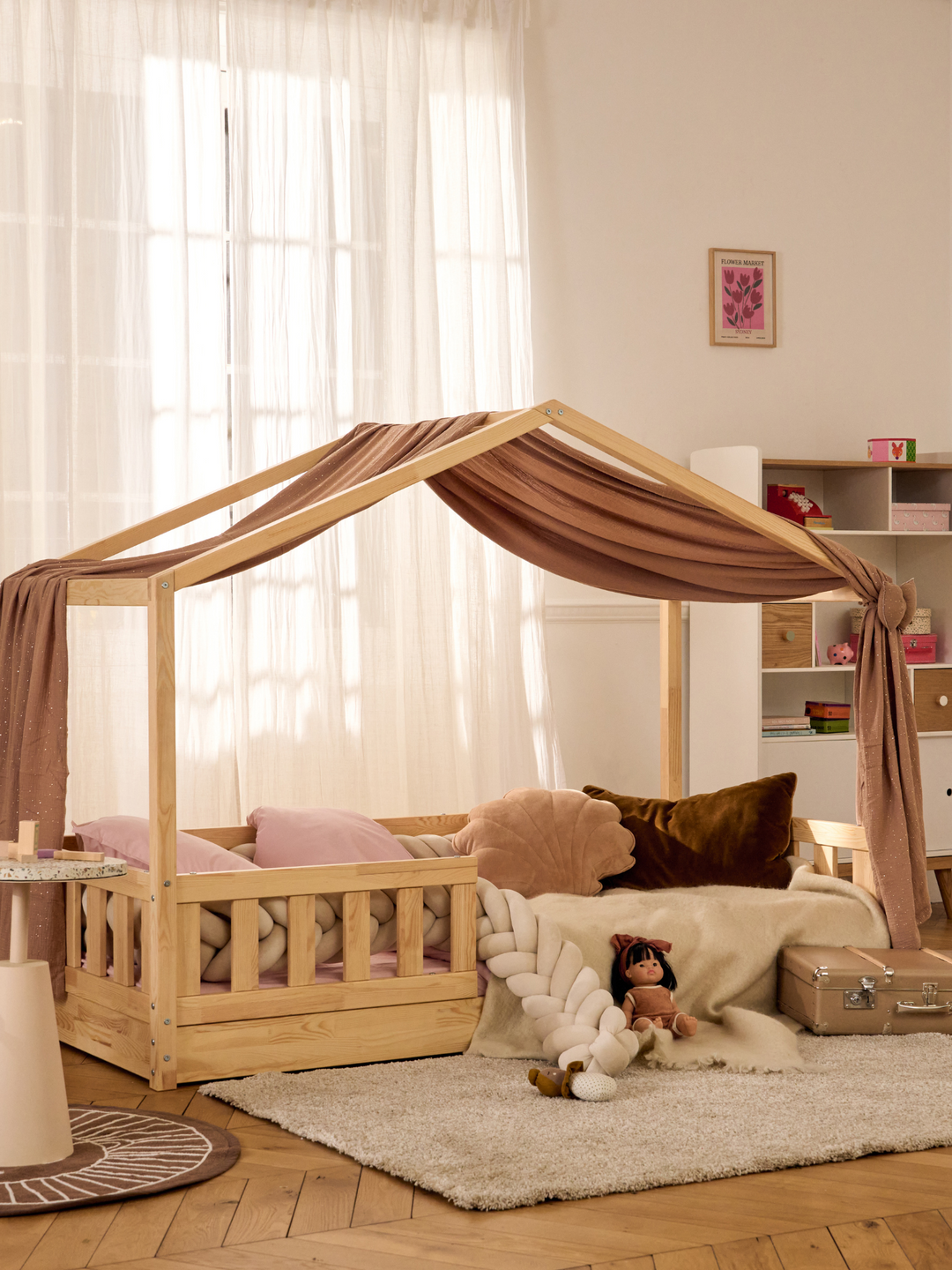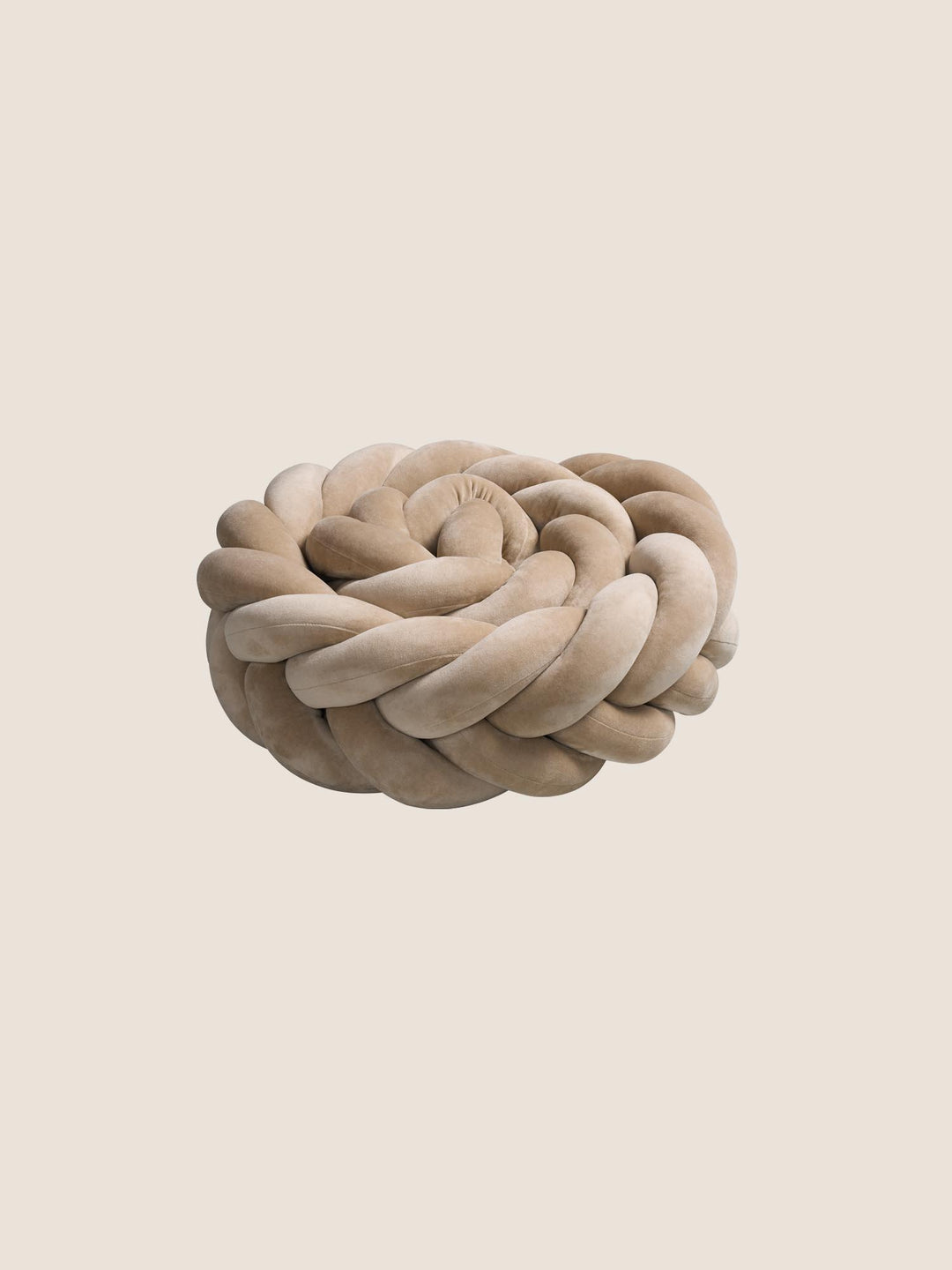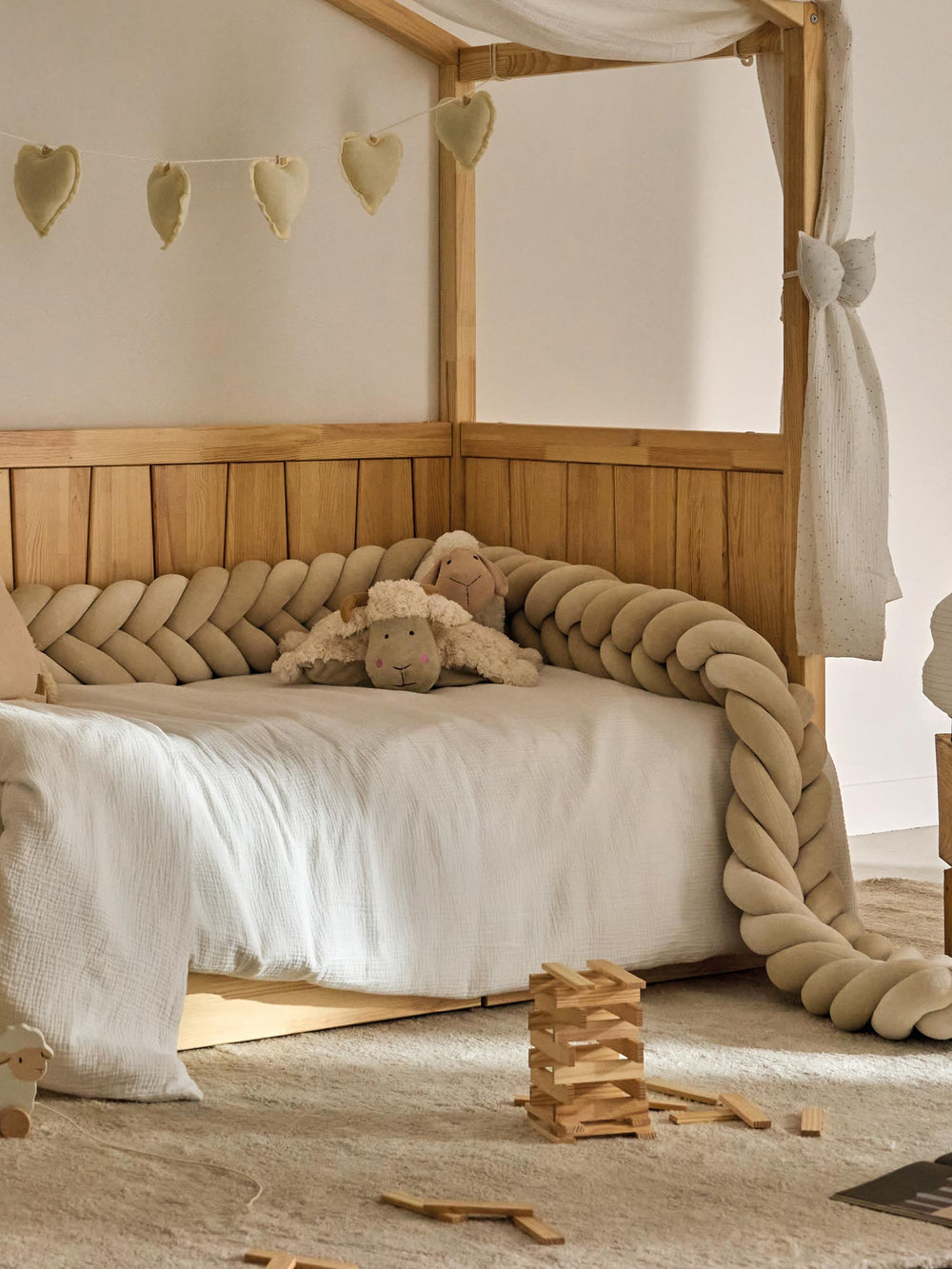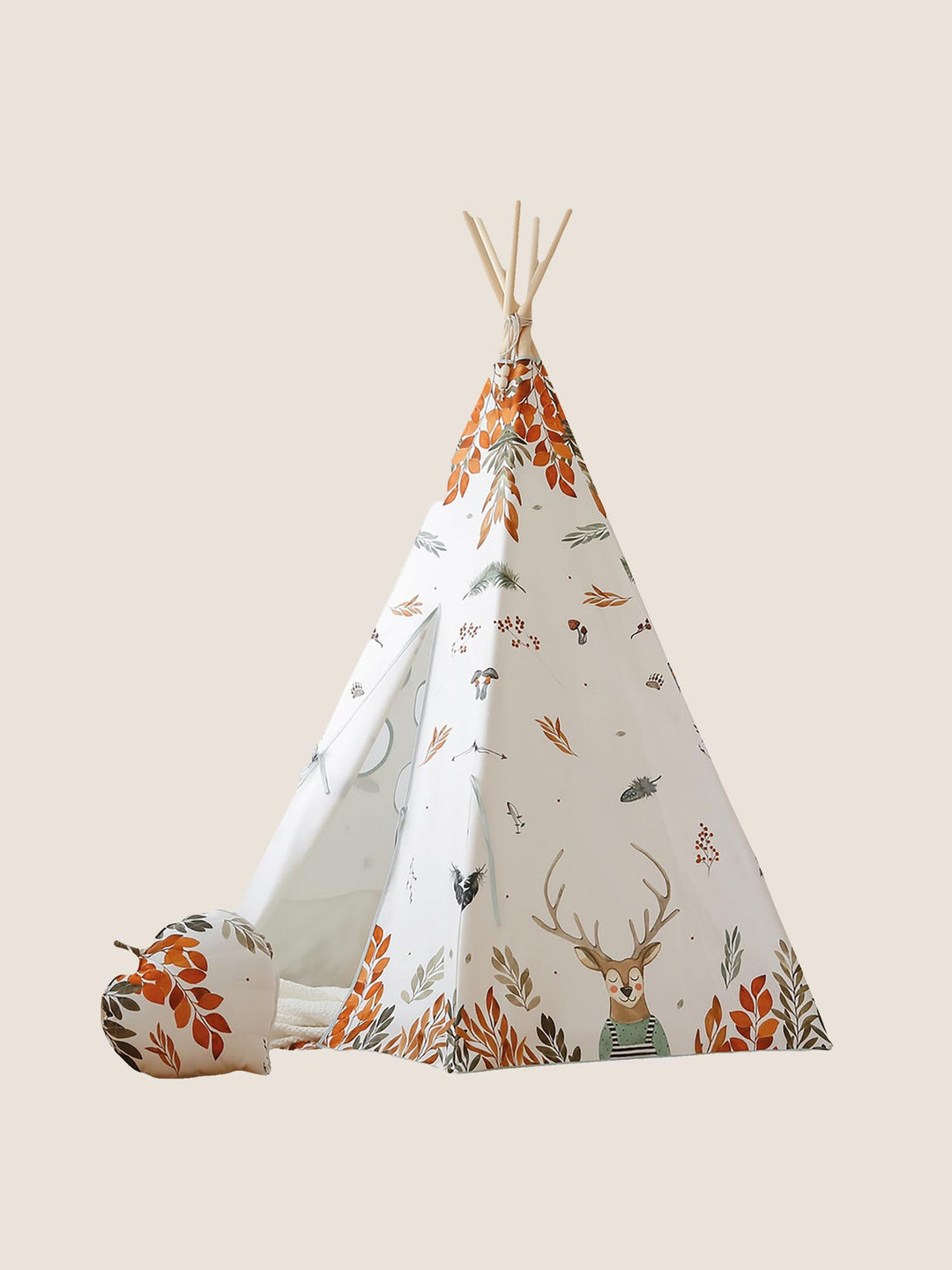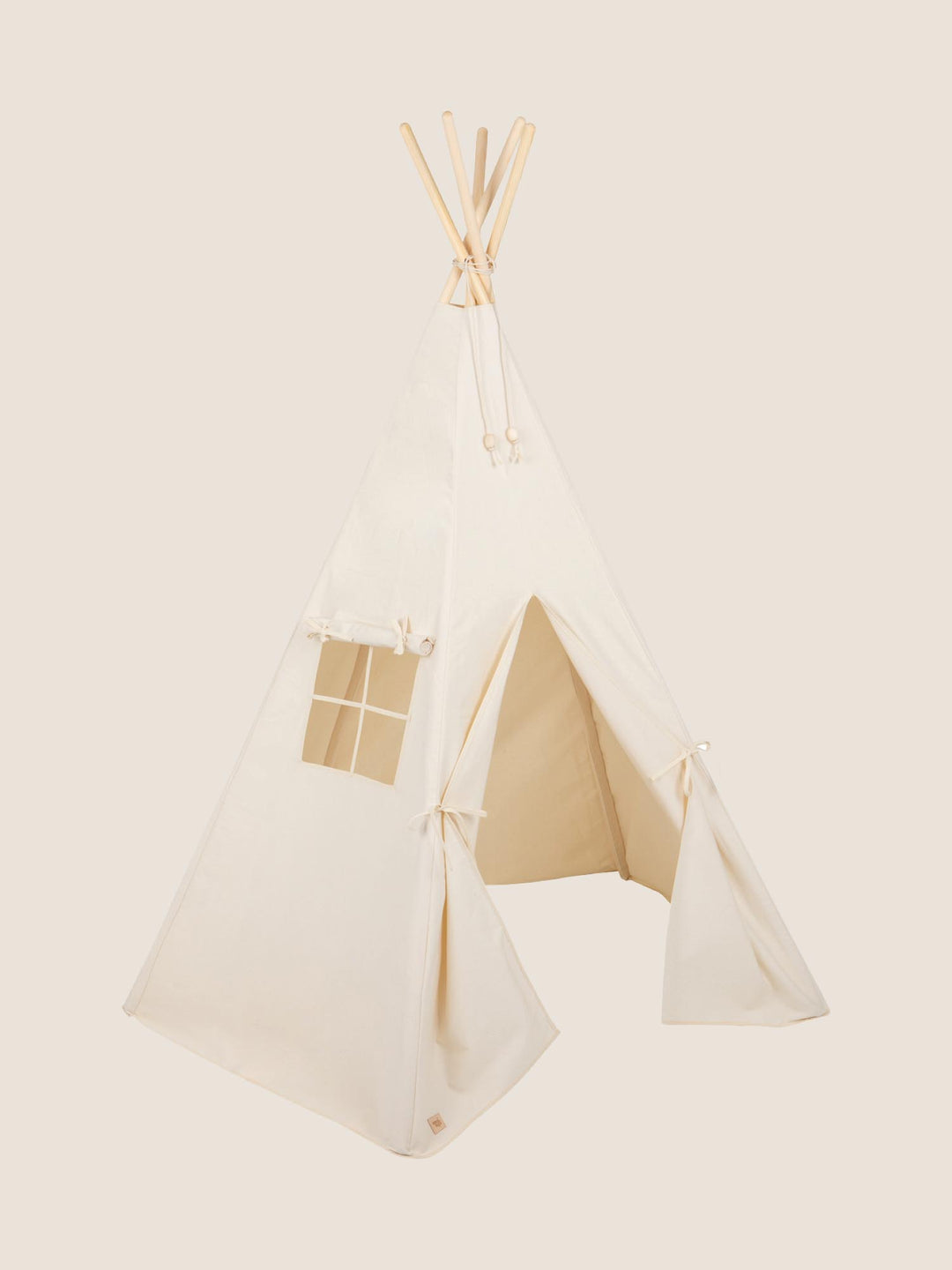Tipis
Symbols of freedom and harmony with nature, tipis have come down to us through the ages. First adopted by the indigenous peoples of North America, these lightweight structures have evolved over the centuries, while preserving their original essence. Their materials have also undergone transformations, from traditional buffalo hides to modern, more environmentally-friendly materials.
Origins and history of tipis
The tipi tent, a true emblem of Native American tribes, takes its name from the Lakota word "tipi", meaning "dwelling". For centuries, the great plains of North America were adorned with these conical structures, which provided shelter for nomadic peoples. Tipis were an ingenious and versatile housing solution, suitable for all seasons. In winter, they provide warmth and comfort thanks to their natural insulation. In wet weather, their unique design guarantees optimum protection against humidity.
Teepees among the indigenous peoples of North America
For tribes like the Lakota and Cheyenne, the tipi was more than just a shelter. It represented a way of life in harmony with nature and the migratory cycle of the bison they followed for food. Easy to assemble and dismantle, light to transport, the tipi was the indispensable ally of these hunter-gatherers who were constantly on the move.
The evolution of tepee design over the centuries
Today, although modernized with contemporary materials such as treated cotton or waterproof polyester, tipis retain their characteristic conical shape. They now combine tradition and innovation to meet today's demands, while respecting the original spirit of their design. These modern tents are perfect for creating a magical space in your garden or offering an immersive experience at festivals.
The timeless charm of the tipi lies in its ability to evoke adventure and freedom, while offering a comfortable refuge. Imagine your children playing in a teepee set up in their bedroom or in your garden: you're inviting a whole world of dreams and imagination into your home! And why not organize a storytelling evening under the stars? The tipi becomes a cocoon for fantastic stories and unforgettable memories.
Tipi materials
Let's delve into the fascinating world of tipis and discover together the materials that give them their unique aura. By exploring the components of these ancestral dwellings, we can better understand why they have survived the ages while retaining their unaltered charm.
Traditional tipi-building materials
In the heart of the Great Plains of North America, Native American tribes used local materials to build their tipis. The structural frame consisted of long wooden poles, often pine or cedar, chosen for their strength and lightness. These poles were arranged in a conical shape, an ingenious arrangement providing excellent stability in strong winds.
The outer skin was made of buffalo hides, tanned and sewn together with remarkable craftsmanship. These hides offered exceptional thermal insulation: warm in winter and cool in summer. They were also waterproof, protecting the inhabitants from the elements.
Modern innovations in tipi materials
Today, while respecting the original spirit of tipis, we have incorporated material innovations that meet contemporary requirements. Structures are now often made with aluminum or light steel poles, guaranteeing durability and ease of assembly/disassembly.
Treated cotton canvas is now the preferred covering material, offering high UV and water resistance as well as breathability. Some fabrics are even flame-retardant for added security. The interior can be embellished with colorful tapestries or motifs inspired by Native American traditions, adding an extra aesthetic touch.
The evolution of materials has made it possible to adapt the tipi to a variety of modern uses: a play area for children, a cosy refuge in the garden or an eco-responsible shelter for festive events. Each contemporary tipi tells a story in which past and present meet in harmony.
The different types of tipis
Traditional versus contemporary tipis
The history of the tipi goes back centuries, when nomadic tribes on the Great Plains of North America used these conical dwellings for their itinerant lifestyle. Made from buffalo hides stretched over a wooden frame, traditional tipis offered exceptional thermal insulation and sturdiness adapted to extreme climatic conditions. Today, contemporary tipis are inspired by this ancestral architecture, while incorporating modern materials such as treated cotton and waterproof polyester. These innovations enhance durability and comfort, while respecting the very essence of the original design.
Children's teepees: a decorative trend
Children's tipis have become a real phenomenon in the world of interior design. More than just an aesthetic element, they create a playful, intimate space where the imagination can flourish. Imagine your child immersed in a fantasy world, protected by the soft, colorful walls of a teepee. These little tents are made from hypoallergenic fabrics and lightweight yet sturdy structures, guaranteeing safety and ease of installation. What's more, some models feature motifs inspired by nature or indigenous cultures, adding an educational touch to this magical space.
Tipi materials
Traditional tipi-building materials
The traditional tipi was mainly made of animal skins stretched over a sturdy wooden frame. The hides were carefully tanned to withstand the elements while providing optimum thermal insulation. This combination enabled the inhabitants to stay warm during the harsh winters and cool during the scorching summers.
Modern innovations in tipi materials
Today, while some craftsmen perpetuate the use of traditional materials out of respect for cultural authenticity, many also opt for modern solutions such as coated cotton or reinforced polyester. These materials offer not only greater resistance to the natural elements, but also ease of care that greatly simplifies their daily use.
The advantages of tipis
Practical benefits of tipis
Tipis, with their iconic conical silhouette, offer a host of practical advantages that make them irresistible. Their ingenious design allows for natural ventilation, ideal for maintaining a cool environment in summer and conserving heat in winter. Imagine yourself under a tipi, protected from the wind and rain thanks to its waterproof, hard-wearing canvas! Our modern structures combine traditional materials with contemporary innovations to offer sturdiness and durability. What's more, they're quick and easy to assemble, perfect for those looking for a practical solution without compromising on comfort.
Spiritual and cultural benefits of tipis
Beyond their functional assets, tipis possess an unrivalled spiritual and cultural richness. Originating with nomadic Amerindian tribes such as the Lakota, they were much more than a simple shelter. They represented a sacred space where each member of the family found his or her place in the harmony of the circle of life. When you adopt a tipi today, you're not just putting up a tent: you're embracing a piece of ancestral history and spirituality. Every time you enter your tipi, you can feel this deep connection with nature and respect for age-old traditions.
Think of the magical moments you can share with your children under a tipi: telling stories by the fire or stargazing through the opening at the top. These precious moments will nurture their imagination while providing a warm, secure setting.
In short, choosing a tipi means opting for a unique space that harmoniously combines modern practicality with a rich cultural heritage.
How to install a tipi
Setting up a tipi may seem a daunting task, but with the right instructions and a little patience, you can transform any space into a haven of peace. Whether you want to create a magical play area for your children or add a bohemian touch to your garden, putting up a tipi is a rewarding experience.
Steps to build a traditional tepee
Following these simple steps will enable you to install your tipi efficiently:
- Choose the location: select a flat, unobstructed site. Make sure there are no stones or roots to interfere with the installation.
- Prepare the poles: traditionally, tipis use sturdy wooden poles. Arrange them in a cone shape, tying them firmly at the top with a sturdy rope.
- Setting up the structure: once the poles have been tied together, lift them up and spread them evenly to form the base of the cone. This step often requires two people to ensure initial stability.
- Wrap the canvas around the poles, starting at the back and working your way forward. Tie it securely to each pole to prevent it from slipping.
- Adjust and secure: adjust the canvas so that it's taut, and anchor the edges to the ground with stakes. This will ensure that the tipi remains stable even in strong winds.
Tips for installing a teepee in the garden
Consider these practical tips when installing a teepee in your garden:
- Safety first: make sure the ground is stable and the tipi is well anchored. Use extra stakes if necessary.
- Modern materials: contemporary tipis often use lightweight but durable materials such as UV-treated and waterproofed polyester. This offers greater resistance to the elements while retaining the traditional aesthetic.
- Optimized interior space: to maximize interior space, place soft cushions and colorful rugs on the floor. This creates a cosy atmosphere ideal for reading or playing.
- Enchanting lighting: add LED string lights inside the tipi to create a magical atmosphere as soon as night falls.
Installing a teepee becomes not only a fun project, but also an opportunity to learn about this fascinating nomadic structure inherited from the indigenous peoples of North America. With a little effort, you can offer your children or yourself a unique space that evokes adventure and serenity.
Modern uses for tipis
Tipis, once the emblems of nomadic Amerindian tribes, have adapted to contemporary needs while preserving their ancestral charm. Today, they are reinventing themselves and finding their place in a variety of modern contexts that appeal to young and old alike. You'll be surprised by the versatility of these conical structures.
Tipis for events and festivals
Imagine taking part in an open-air festival, surrounded by majestic tipis that add a touch of authenticity and conviviality to the event. Many organizers now choose tipis to create unique spaces for music festivals, weddings and other celebrations. They offer not only comfortable shelter but also a warm, intimate atmosphere that encourages exchanges between participants.
Tipis are used for a variety of events:
- Bohemian weddings: tipis are perfect for open-air ceremonies where every detail counts to create a magical atmosphere.
- Eco-responsible festivals: their environmentally-friendly structure fits in perfectly with events promoting sustainability.
- Wellness retreats: used as meditation or workshop rooms, the tipis add a spiritual dimension to the activities on offer.
Tipis as eco-responsible camping spaces
Are you a fan of eco-friendly camping? Glamping campsites (glamour + camping) are adopting tipis to offer visitors an immersive experience in the heart of nature. These atypical accommodations combine modern comforts with the authenticity of a way of life close to the land. The materials used often comply with strict ecological standards, guaranteeing minimal impact on the environment.
Here are just a few examples of how teepees can be used for camping:
- Family camps: give your children the adventure of a night in a tepee, with all the comforts they need for an enjoyable stay.
- Romantic adventures: a stay in a tipi can be synonymous with an unforgettable romantic getaway under the stars.
- Educational stays: to raise awareness among youngsters of traditional lifestyles and the importance of respecting nature.
Let yourself be tempted by this unique immersion where the past meets the present in harmony. Whether it's for a starlit night or a memorable event, the tipi offers you an experience like no other! Isn't it fascinating?
